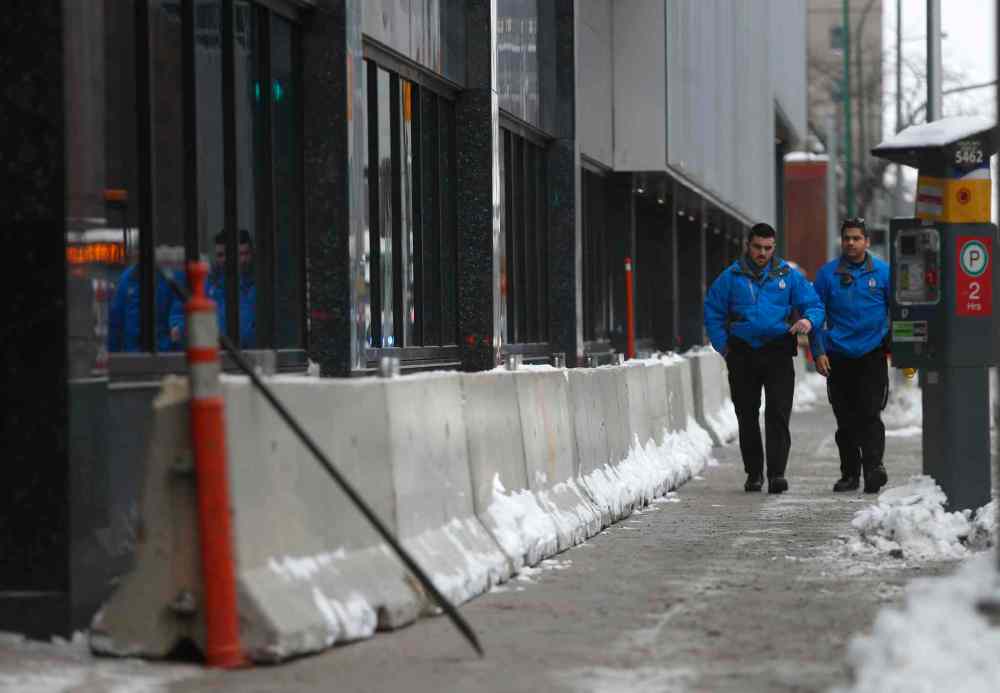Temporary concrete barriers placed around new downtown police HQ
Advertisement
Read this article for free:
or
Already have an account? Log in here »
To continue reading, please subscribe:
Monthly Digital Subscription
$0 for the first 4 weeks*
- Enjoy unlimited reading on winnipegfreepress.com
- Read the E-Edition, our digital replica newspaper
- Access News Break, our award-winning app
- Play interactive puzzles
*No charge for 4 weeks then price increases to the regular rate of $19.00 plus GST every four weeks. Offer available to new and qualified returning subscribers only. Cancel any time.
Monthly Digital Subscription
$4.75/week*
- Enjoy unlimited reading on winnipegfreepress.com
- Read the E-Edition, our digital replica newspaper
- Access News Break, our award-winning app
- Play interactive puzzles
*Billed as $19 plus GST every four weeks. Cancel any time.
To continue reading, please subscribe:
Add Free Press access to your Brandon Sun subscription for only an additional
$1 for the first 4 weeks*
*Your next subscription payment will increase by $1.00 and you will be charged $16.99 plus GST for four weeks. After four weeks, your payment will increase to $23.99 plus GST every four weeks.
Read unlimited articles for free today:
or
Already have an account? Log in here »
Hey there, time traveller!
This article was published 21/12/2015 (3605 days ago), so information in it may no longer be current.
Concrete barriers are now in place around Winnipeg’s new police headquarters, but the eyesores won’t be around forever.
On Monday, crews began placing Jersey barriers — the concrete slabs commonly used to block off highway lanes under construction or create roadblocks in border regions and war zones — around the new home of the Winnipeg Police Service as a temporary means of protecting the structure from vehicular attacks.
The concrete slabs will be removed once the city decides upon a permanent means of protecting the building. The city plans to spend up to $1.9 million next year on devices such as bollards, which are vertical barriers usually made out of concrete and steel.

“The Jersey barriers are a temporary measure until such time as a permanent protective barrier is installed,” a city spokeswoman said in a statement. “The plan is to address this at the same time as public works replaces the sidewalk along the south, east and west sides of the building.”
Ever since the Oklahoma City bombing in 1995, most new public buildings in the U.S. and Canada have been protected by bollards or other physical barriers in order to minimize the potential damage wrought by attacks involving vehicles.
The $1.9-million expenditure on physical protection, revealed by the city in October, took the total pricetag for the police headquarters project up to $214 million. The first police unit moved in earlier this month, kicking off a transfer of staff expected to wrap up in June or July 2016.



